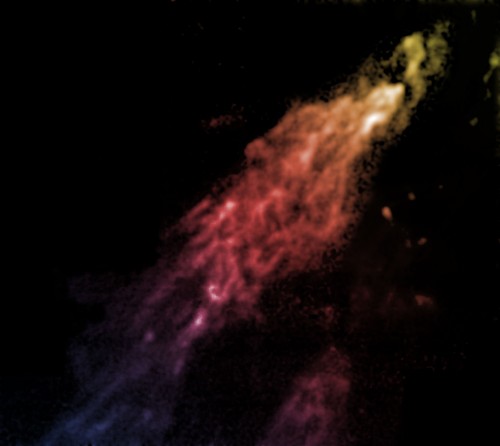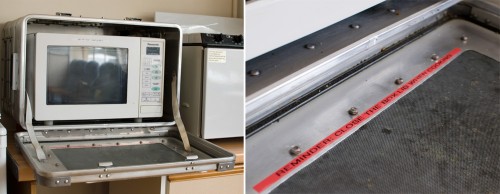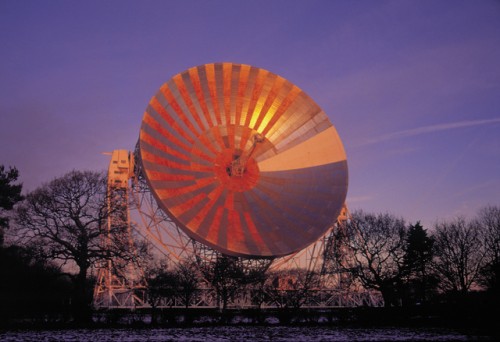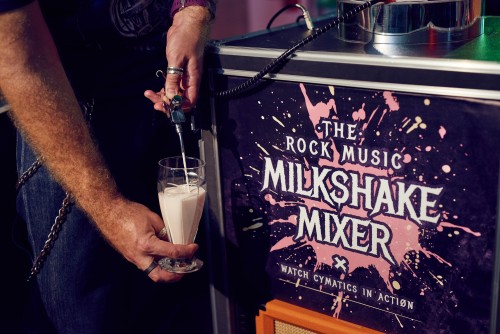Tag archives: radio telescope
A rockin’ good milkshake, a telescope that wants to be the next Taj Mahal
By Matin Durrani and Hamish Johnston
Film fans will well remember the opening scene from Back to the Future, in which Marty McFly (played by Michael J Fox) is thrown across a room by a massive sound wave from an enormous guitar amp. It’s more science fiction than science fact, but to illustrate the impact that sound can have on everyday life, staff at EngineeringUK have come up with something really rather clever. To drum up interest in next year’s science-careers show The Big Bang Fair, which is to be held in March in Birmingham, UK, they’ve built what they dub a “Rock Music Milkshake Mixer”.
View all posts by this author | View this author's profile
First image of a black hole expected a year from now
By Louise Mayor in Waterloo, Canada
According to Avery Broderick, a physicist at the University of Waterloo and the Perimeter Institute for Theoretical Physics (PI) in Canada, the iconic picture of a black hole from the film Interstellar “really only presages astronomical reality by about a year”. That’s because, as Broderick explains, “as soon as next spring the Event Horizon Telescope is gonna produce images of the black hole at the centre of the Milky Way”.
Coming soon(ish) to a galaxy near you

Image of Smith’s Cloud taken by the Green Bank Telescope. (Courtesy: Bill Saxton, NRAO/AUI/NSF)
By Margaret Harris at the AAAS meeting in San Jose
A giant cloud of hydrogen gas is barrelling towards the Milky Way faster than the speed of sound, and dark matter may hold it together long enough to produce a spectacular outburst of new stars in the night sky – but not for another 30 million years.
The cloud – which is known as Smith’s Cloud after Gail Bieger-Smith, who discovered it as an astronomy student in 1963 – is one of several starless blobs of hydrogen known to exist in the space between galaxies. According to Felix “Jay” Lockman, principal scientist at the US National Radio Astronomy Observatory’s Green Bank Telescope, such gas clouds are, in effect, “construction debris” left over from an earlier age of galaxy formation. “These are parts for remodelling your house that didn’t arrive by the time the contractor left,” Lockman told an audience at the 2015 AAAS meeting in San Jose, California.
Cakes that are out of this world, what’s on Andre Geim’s iPod and who’s the April fool?

The joke’s on me: click on the image for a larger version where you can see the instruction for users
By Hamish Johnston
On Tuesday I was feeling particularly pleased with myself over the April Fool’s piece that I penned. It was about a fictitious microwave-oven ban organized by radio astronomers at the UK’s Jodrell Bank Observatory. But now it looks like I might have a bit of microwaved egg on my face because two of my colleagues visited Jodrell Bank this week and guess what? Astronomers there have built a Faraday cage around the microwave in their tearoom to stop it from interfering with their equipment. Louise Mayor took the above photos: click on the image to read the reminder to microwave users.
View all posts by this author | View this author's profile
Should governments provide funds for the search for extraterrestrial intelligence?

The Lovell Telescope was used during the SETI Institute’s Project Phoenix.
(Courtesy: Jodrell Bank Centre for Astrophysics, University of Manchester)
By James Dacey
Are we alone in the universe? It’s the age-old question that took on a whole new significance once we had built the tools to transmit and receive radio waves across interstellar distances. With the advent of radio telescopes, we had finally acquired the faculties to listen for the signs of an alien race trying to make contact. The search for extraterrestrial intelligence – better known as SETI – took a giant leap forwards in 1984, when the SETI Institute was founded in California. This institute is the nerve centre of SETI activities and it is funded almost entirely from private sources.
But while SETI activities have been strongly associated with the US, the movement has been international since its outset. Here in the UK, perhaps the most significant contribution has probably been the country’s involvement in Project Phoenix, which between 1998 and 2003 used the 76 m Lovell Telescope (pictured above) at Jodrell Bank Observatory near Manchester.
It seems that the desire among British scientists to search for aliens is still alive and well, as a bunch of academics has recently set up the UK SETI Research Network. The group held its first formal activity last Friday (5 July), during three SETI sessions at this year’s National Astronomy Meeting (NAM2013) at the University of St Andrews in Scotland.
View all posts by this author | View this author's profile

